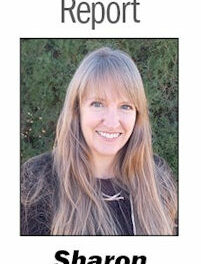
Joan Didion has been top of mind for me, because I just finished her opus on grief: The Year of Magical Thinking. Didion was known for her creative nonfiction and for being critical to the New Journalism movement of the 60s. Along with decades of articles and essays published in outlets like Vogue, Esquire, Life and The New York Times, Didion was also a novelist and screenplay writer.
Didion’s writing is more revolutionary than anything she covered. Not that she didn’t cover important topics, but her writing continues to make her pieces compelling even more than the subject matter itself. Her style is nearly comma-less and pulls you in, sentence after sentence. It’s the kind of writing where you’d like to take her sentences apart then put them back together again, like an aspiring mechanic learning how to build an engine.
My knowledge of photojournalism history is sadly lacking, so I went looking for a historically significant woman photojournalist to write about, and Margaret Bourke-White is who I found.
She was the first woman photojournalist on staff at Life magazine, the first known woman war correspondent and was allowed to document combat zones in WWII. She photographed factories and everyday life in the Soviet Union, and she was there to take pictures during the India-Pakistan partition.
Bourke-White documented the Dust Bowl and the Depression. Her work is fearless, nuanced and beautiful.
I have to fess up, I have written an article like this once before. In my college days, I wrote a Women’s History Month column about famous women journalists. I did my best not to write about the same women now that I wrote about then, but Ida B. Wells cannot be overlooked. She was in that column and she’s in this one, and if I write another one of these in 10 years, she’ll probably be in that list too. Her work is just that significant.
Wells lived from 1862 to 1931. She was a civil rights activist who was born into slavery during the Civil War. When she was still a teenager, her parents both died and Wells took on work as a teacher so she could provide for her siblings.
Wells co-owned a newspaper in Tennessee and covered racial segregation. She investigated lynching cases. Her work dismantled the narratives used to justify lynching and demonstrated how violence was used to intimidate African American communities.
The violent backlash to that coverage—a white mob ransacking her newspaper office—forced her to move north in 1892. Unintimidated, Wells continued her work, publishing influential pamphlets on lynching: “Southern Horrors: Lynch Law in All Its Phases” and “The Red Record.”
Her work helped convince the public that lynching in the U.S. was on the rise and that something urgently needed to be done about it.






















